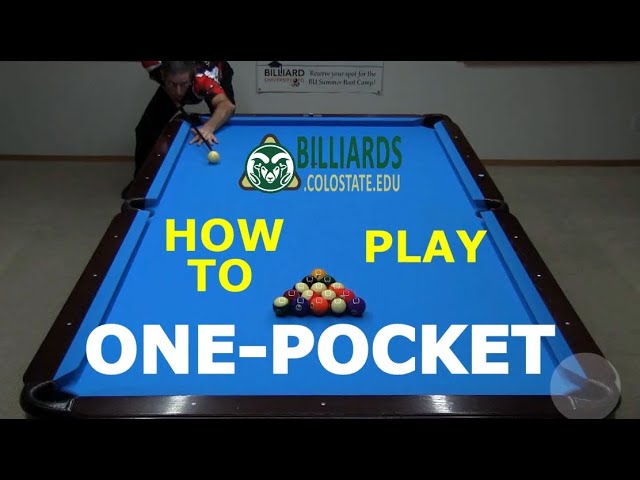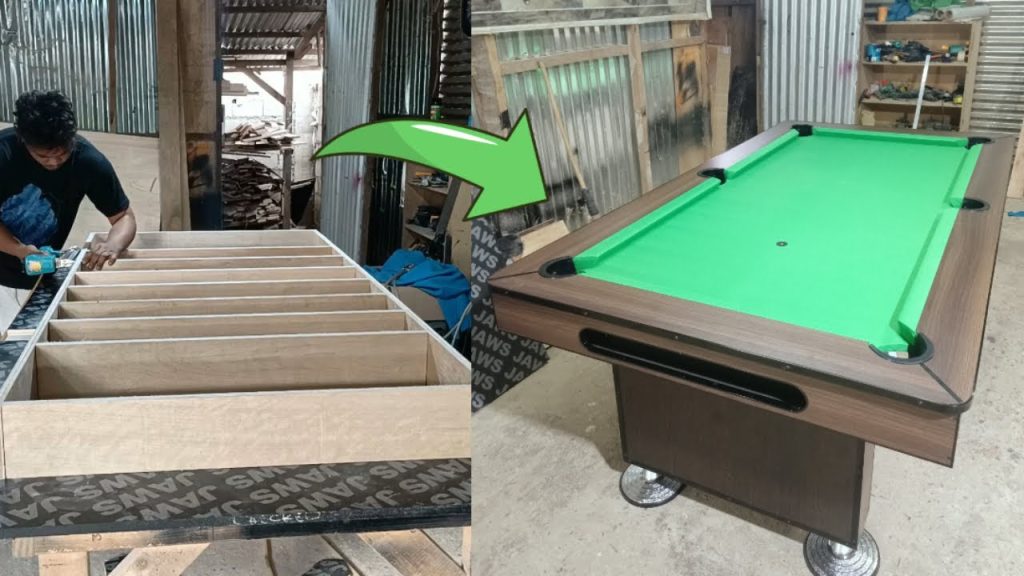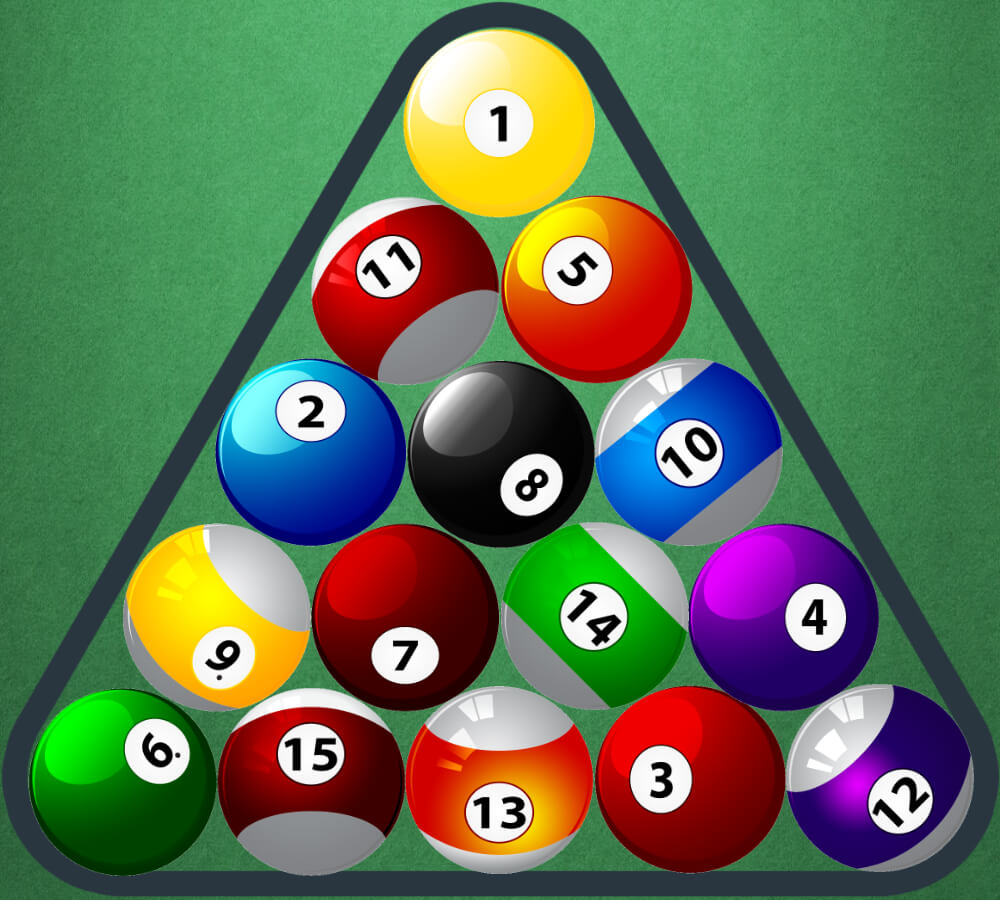Playing One Pocket Billiards can be tricky but rewarding. This game tests your skill and strategy.
One Pocket Billiards is a unique billiard game that requires sharp focus and precision. Unlike other billiard games, players aim to pocket balls into one specific pocket. This game emphasizes strategy over power, making it a favorite for many. Learning to play One Pocket Billiards can enhance your overall pool skills.
It challenges you to think ahead and plan your shots carefully. In this guide, we will break down the basics of One Pocket Billiards. You will learn the rules, strategies, and tips to improve your game. Whether you’re new to billiards or an experienced player, mastering One Pocket Billiards can be a fun and exciting journey.
Introduction To One Pocket Billiards
One Pocket Billiards is a strategic and skillful game. Unlike other billiard games, it focuses on precision and planning. Each player must pocket balls in a designated pocket. This unique aspect makes it both challenging and exciting.
Brief History
The origins of One Pocket Billiards trace back to the 19th century. It gained popularity in the United States. This game emerged as a test of tactical prowess and patience. Notable players like Willie Mosconi contributed to its fame. Today, it remains a favorite among billiard enthusiasts.
Game Objectives
The main objective is simple: pocket eight balls in your chosen pocket. Each player picks a pocket at the start. You must then aim to sink balls in that pocket only. The first player to pocket eight balls wins.
Players also need to block their opponent. Defensive shots are crucial. Planning and strategy play a key role. Successful players think several shots ahead. This makes the game both a mental and physical challenge.
Essential Equipment
To play One Pocket Billiards effectively, having the right equipment is crucial. This game requires specific tools to ensure a smooth and enjoyable experience. Below, we will detail the essential equipment needed to play One Pocket Billiards.
Table And Balls
The billiards table is the centerpiece of the game. A standard One Pocket table is 9 feet long. It has six pockets, one in each corner and one at each side. The table should have a smooth, level surface covered with quality felt.
The billiard balls used in One Pocket are standard size. There are 15 object balls and one cue ball. The object balls are numbered 1 to 15, and their colors vary. The cue ball is solid white.
| Equipment | Description |
|---|---|
| Table | 9 feet long with six pockets |
| Object Balls | 15 balls, numbered 1 to 15 |
| Cue Ball | Solid white |
Cues And Accessories
The cue stick is another vital piece of equipment. Choose a cue stick that feels comfortable and balanced. The standard length is around 57-58 inches. The cue tip should be well-maintained, as it impacts control and accuracy.
Chalk is essential for every shot. Apply chalk to the cue tip to prevent slipping and ensure a good grip. Keep a piece of chalk handy during the game.
Other helpful accessories include a cue rack for storing cues and a brush to keep the table clean. A triangle rack helps in setting up the balls before play.
- Cue Stick: Choose a balanced and comfortable stick.
- Chalk: Essential for grip and control.
- Cue Rack: For storing cue sticks.
- Brush: To clean the table.
- Triangle Rack: To set up the balls.
Basic Rules
One Pocket Billiards is a unique and strategic game. Unlike other billiards games, players only use one pocket each. Understanding the basic rules is essential for a fair and enjoyable game. Let’s dive into the fundamental aspects of One Pocket Billiards.
Scoring System
In One Pocket Billiards, the scoring system is straightforward. Each player is assigned one pocket at the start of the game. The objective is to pocket more balls in your designated pocket than your opponent does in theirs.
Here’s how the scoring works:
- Each pocketed ball in your designated pocket earns you one point.
- The game typically ends when a player reaches a pre-determined score, often 8 points.
- If a ball is pocketed in your opponent’s designated pocket, it does not count towards your score.
Fouls And Penalties
Fouls are an important aspect of One Pocket Billiards. Committing a foul can give your opponent an advantage. Here are the common fouls and their penalties:
| Foul Type | Penalty |
|---|---|
| Shooting the cue ball off the table | Opponent places cue ball behind the head string. |
| Pocketing the cue ball (scratch) | Opponent places cue ball behind the head string. |
| Pocketing a ball in the wrong pocket | Ball is spotted, and the opponent gets ball in hand. |
| Touching balls with anything other than the cue | Opponent gets ball in hand. |
Understanding these basic rules will help you get started with One Pocket Billiards. Remember to practice and have fun!
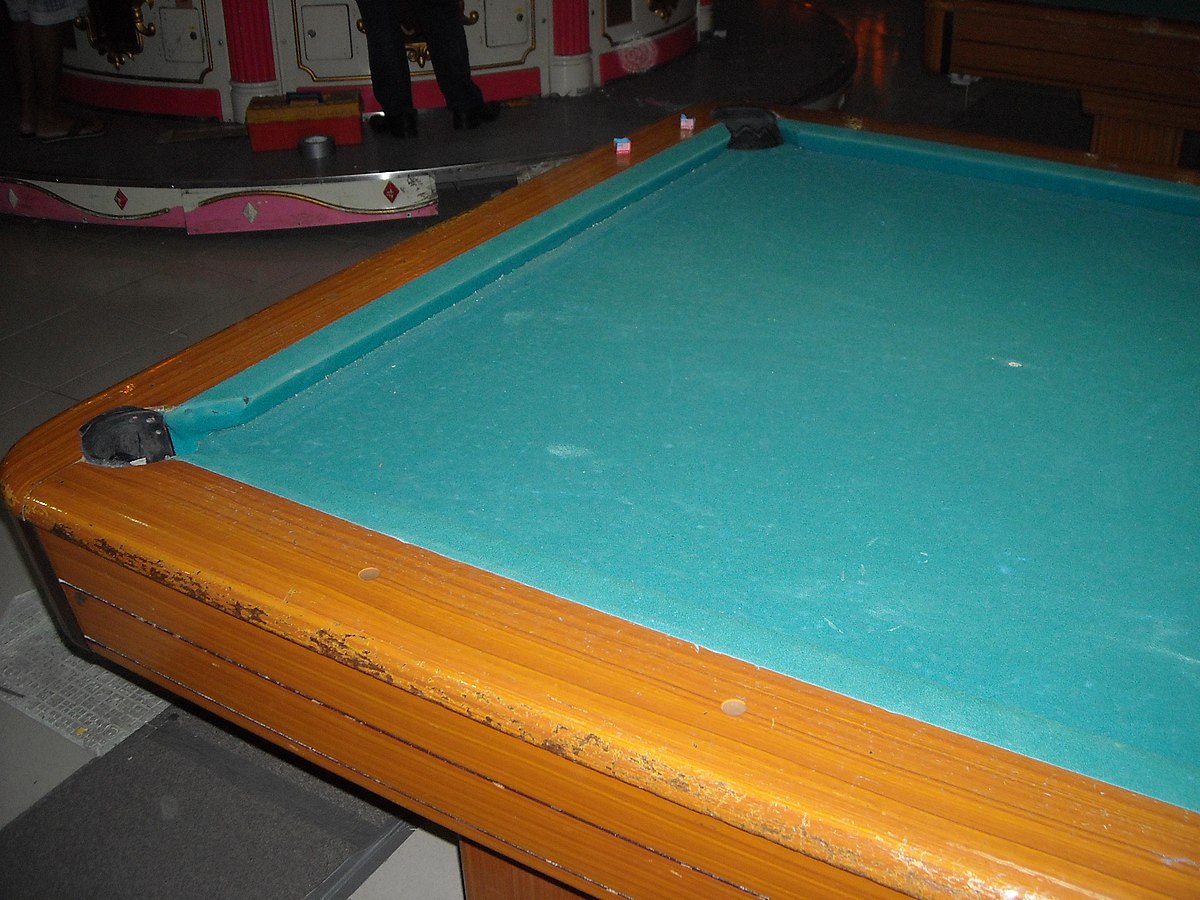
Credit: en.wikipedia.org
Starting The Game
One Pocket Billiards is a strategic and exciting game. The key to winning lies in mastering the start. Here’s how you can start the game effectively.
Breaking The Rack
The break shot is crucial in One Pocket Billiards. The player who wins the lag usually breaks. The balls are racked in a triangle formation. The apex ball is placed on the foot spot. Make sure the balls are tightly packed.
Stand behind the cue ball. Aim to hit the head ball with force. The goal is to spread the balls across the table. A good break can set the tone for the rest of the game.
Choosing Pockets
After the break, each player selects a pocket. This pocket becomes their target for the game. Choose a pocket that gives you the best angle and opportunities. Once chosen, each player aims to sink their balls into their designated pocket.
Choosing the right pocket can give you a strategic advantage. Think ahead and plan your moves accordingly.
Offensive Strategies
Playing One Pocket Billiards requires a strategic mindset. Offensive strategies can give you a winning edge. You need to think ahead and plan your shots carefully. Focus on creating opportunities and scoring points. Let’s dive into some effective offensive tactics.
Setting Up Shots
Setting up shots is crucial in One Pocket Billiards. You need to position the cue ball and target balls for the best advantage. Here are some key points to consider:
- Plan your next shot: Always think about the next shot. This helps you stay a step ahead.
- Control the cue ball: Use spin and power to control the cue ball’s position.
- Avoid clusters: Try to keep balls spread out. This gives you more options.
Look at the table layout. Decide the best way to break it up. Move balls into favorable positions. This makes it easier to score and keeps your opponent on defense.
Banking Techniques
Banking shots are a vital part of offensive play. They involve hitting the cue ball to make the target ball rebound off the rails. Here are some banking techniques:
- Understand angles: Learn the angles at which balls rebound off the rails. Practice makes perfect.
- Use the diamond system: The table’s diamonds help calculate bank shots. Each diamond represents an angle.
- Adjust for speed and spin: Speed and spin affect the ball’s path. Adjust accordingly.
Banking can be tricky, but it opens up many scoring opportunities. A well-executed bank shot can put you in a strong position. Keep practicing to master these techniques.
Defensive Tactics
One Pocket Billiards is a strategic game. Defensive tactics can turn the tide in your favor. They allow you to control the table and limit your opponent’s options. Understanding these tactics can give you a significant edge.
Safety Plays
Safety plays are essential in One Pocket Billiards. They involve positioning the cue ball in difficult spots for your opponent. This forces your opponent to make a tough shot or play defensively as well.
- Soft Touch: Hit the cue ball softly. Make it stop behind other balls.
- Rail Shot: Aim to place the cue ball on the rail. This limits your opponent’s cue ball control.
- Hide and Seek: Place the cue ball in a cluster of balls. Your opponent will have a hard time making a clear shot.
Blocking Opponent
Blocking your opponent is another important defensive tactic. The goal is to make it hard for your opponent to score. This can be done in various ways.
| Strategy | Description |
|---|---|
| Blocking Pocket | Position a ball near your opponent’s pocket. This makes it harder for them to score. |
| Cluster Creation | Create clusters of balls. This complicates the table for your opponent. |
By employing these defensive tactics, you can keep your opponent on their toes. They will have fewer scoring opportunities, giving you a better chance to win the game.
Advanced Techniques
In the world of One Pocket Billiards, mastering the basics is just the start. Advanced techniques take your game to a new level. These skills make your play more strategic and precise. Let’s explore two key advanced techniques: Cue Ball Control and Combination Shots.
Cue Ball Control
Having excellent cue ball control is vital. It helps position the cue ball for the next shot. Here are some tips:
- Speed Control: Practice hitting the ball with different speeds. This helps you understand how the ball behaves.
- Spin: Learn to use topspin, backspin, and sidespin. Each spin affects the cue ball’s direction.
- Angles: Aim to hit the ball at precise angles. This ensures the cue ball lands where you want.
Use a table like this to track your progress:
| Technique | Description | Practice Time |
|---|---|---|
| Speed Control | Vary the strength of your shots | 15 mins/day |
| Spin | Apply topspin, backspin, sidespin | 20 mins/day |
| Angles | Hit balls at different angles | 25 mins/day |
Combination Shots
Combination shots involve hitting one ball to pocket another. These shots can change the game’s outcome. Follow these steps:
- Identify the Target: Spot the ball you want to pocket.
- Plan the Path: Visualize the path the balls will take.
- Execute the Shot: Strike the cue ball with the right power and angle.
Understanding angles is crucial for successful combination shots. Practice these shots regularly to enhance your skill.

Credit: m.youtube.com
Practice Drills
To become proficient in One Pocket Billiards, practice is essential. Regular drills can help you refine your skills and improve your game. Below, we explore some practice drills to enhance your play, whether you’re practicing alone or with a partner.
Solo Drills
Practicing alone can be very effective. Here are some solo drills to try:
- Target Practice: Place balls in different pockets. Aim to sink them in a specific order. This improves accuracy.
- Bank Shots: Set up balls for bank shots. Focus on your angles and technique.
- Position Play: Place a ball near a pocket. Try to position the cue ball for your next shot. This helps with strategic planning.
Partner Exercises
Practicing with a partner adds a competitive edge. Here are some exercises to try:
- One Pocket Races: Take turns sinking balls into a designated pocket. The first to sink all their balls wins.
- Defense Drills: One player sets up a challenging shot. The other tries to defend by leaving the cue ball in a tough spot.
- Scenario Play: Create specific game scenarios. Each player works on their best strategies to win.
Regular practice with these drills will improve your One Pocket Billiards skills. Practice both solo and with a partner to cover all aspects of the game.
Mental Preparation
Playing One Pocket Billiards requires not only physical skill but also mental preparation. Your mind plays a crucial role in how well you perform. It’s essential to stay focused and handle pressure effectively. Below are some key aspects of mental preparation for One Pocket Billiards.
Focus And Concentration
Focus and concentration are vital in One Pocket Billiards. You need to block out distractions. Keep your mind on the game. Here are some tips to improve focus:
- Practice mindfulness: Take deep breaths before each shot.
- Set short-term goals: Aim for one pocket at a time.
- Visualize success: Picture making the perfect shot.
These techniques help you stay in the moment. They prevent your mind from wandering. Consistent practice sharpens your focus over time.
Handling Pressure
Pressure can affect your performance. Knowing how to handle it is key. Here are some strategies:
- Stay calm: Deep breathing helps reduce anxiety.
- Positive self-talk: Encourage yourself with positive words.
- Preparation: Practice difficult shots regularly.
These methods help you stay composed. They allow you to make clear decisions under pressure. Remember, mental strength is as important as physical skill in One Pocket Billiards.
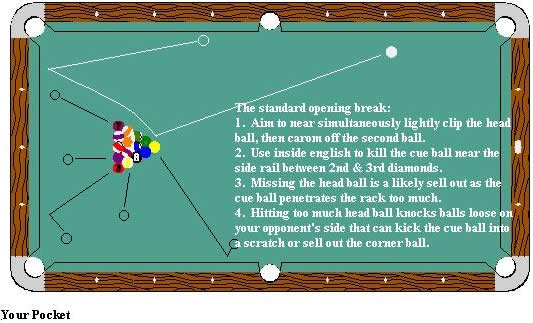
Credit: www.onepocket.org
Common Mistakes
Playing One Pocket Billiards can be tricky. Many players make common mistakes that affect their performance. Below are some of the frequent mistakes and how to avoid them.
Avoiding Fouls
Fouls can greatly affect your game. To avoid fouls, always pay attention to the following:
- Keep the Cue Ball on the Table: Ensure you strike the cue ball correctly to prevent it from jumping off the table.
- Hit the Target Ball First: Always hit the intended target ball first. Hitting other balls first leads to a foul.
- Watch Your Foot Position: One foot must remain on the floor during the shot. Lifting both feet is a foul.
By focusing on these points, you can reduce fouls and improve your game.
Improving Accuracy
Accuracy is crucial in One Pocket Billiards. Here are some tips to improve your accuracy:
- Practice Your Aim: Use aiming techniques to line up your shots better.
- Control Your Stroke: Maintain a consistent and smooth stroke. Avoid sudden, jerky movements.
- Focus on the Cue Ball: Pay attention to where you hit the cue ball. Hitting it in the right spot ensures better control.
Improving your accuracy requires practice and concentration. Work on these tips to see better results in your game.
Frequently Asked Questions
What Is One Pocket Billiards?
One Pocket Billiards is a strategic pool game where each player must pocket balls into a designated pocket. The first player to pocket eight balls in their assigned pocket wins the game.
How Do You Win In One Pocket?
You win in One Pocket by pocketing eight balls into your designated pocket before your opponent does. Strategic thinking and defensive shots are crucial for success.
What Are The Basic Rules Of One Pocket?
Each player is assigned one pocket. Players must pocket eight balls into their designated pocket to win. Fouls result in penalties and balls being re-spotted.
What Is A Foul In One Pocket Billiards?
A foul in One Pocket Billiards occurs when a player pockets a ball in the wrong pocket. Fouls also include failing to hit a rail or committing a scratch.
Conclusion
Playing One Pocket Billiards can be enjoyable and rewarding. Remember to practice regularly. Focus on strategy and shot accuracy. Pay attention to your opponent’s moves. Use defensive shots wisely. Keep improving your skills and techniques. Enjoy the game with friends and family.
Have fun and keep learning!

